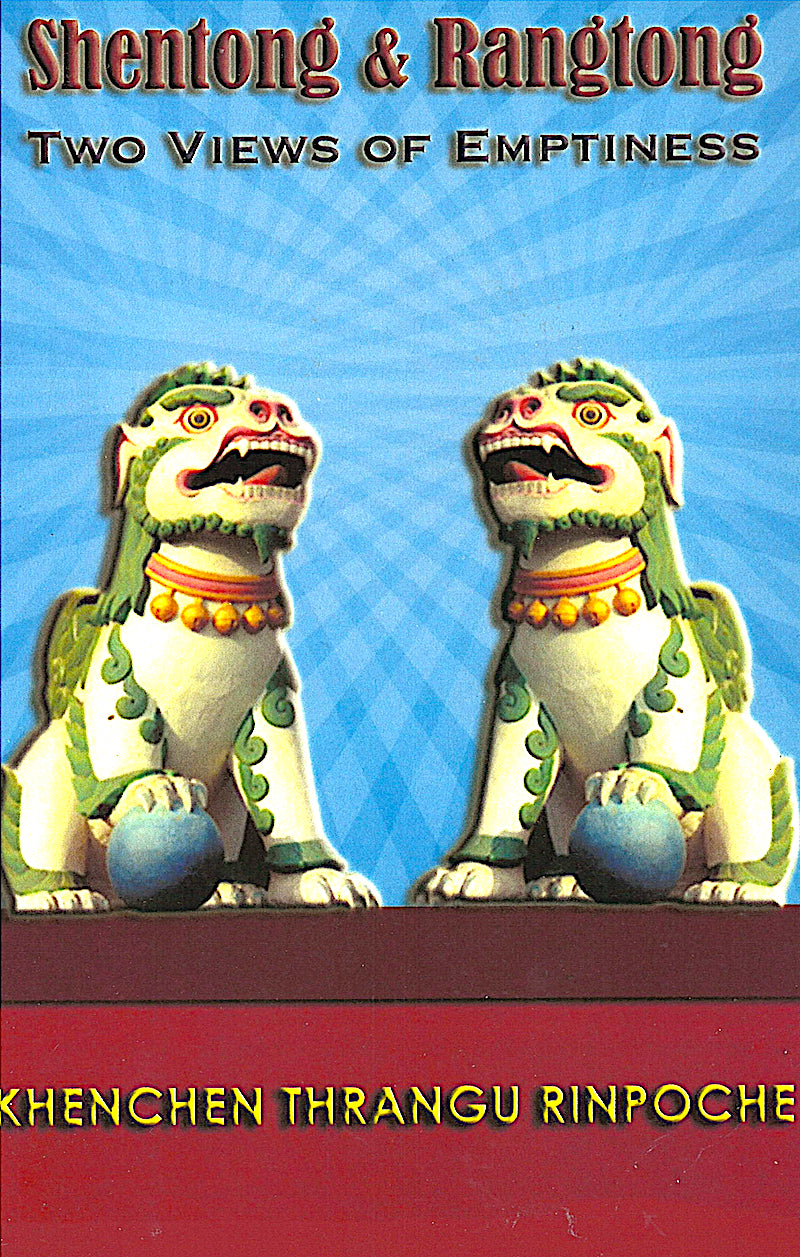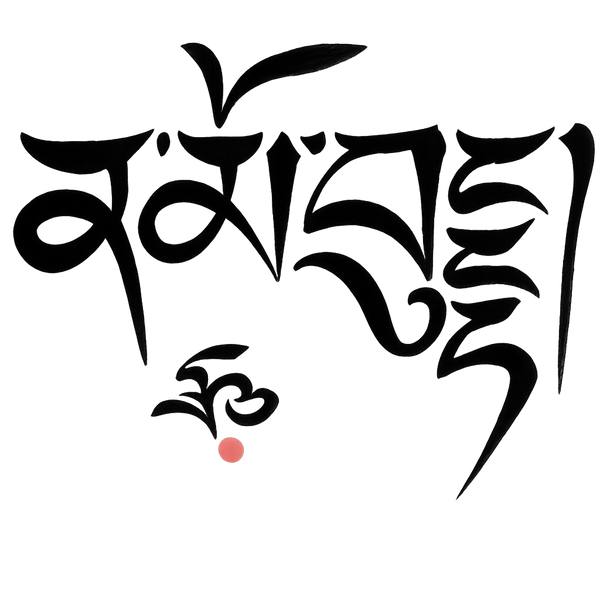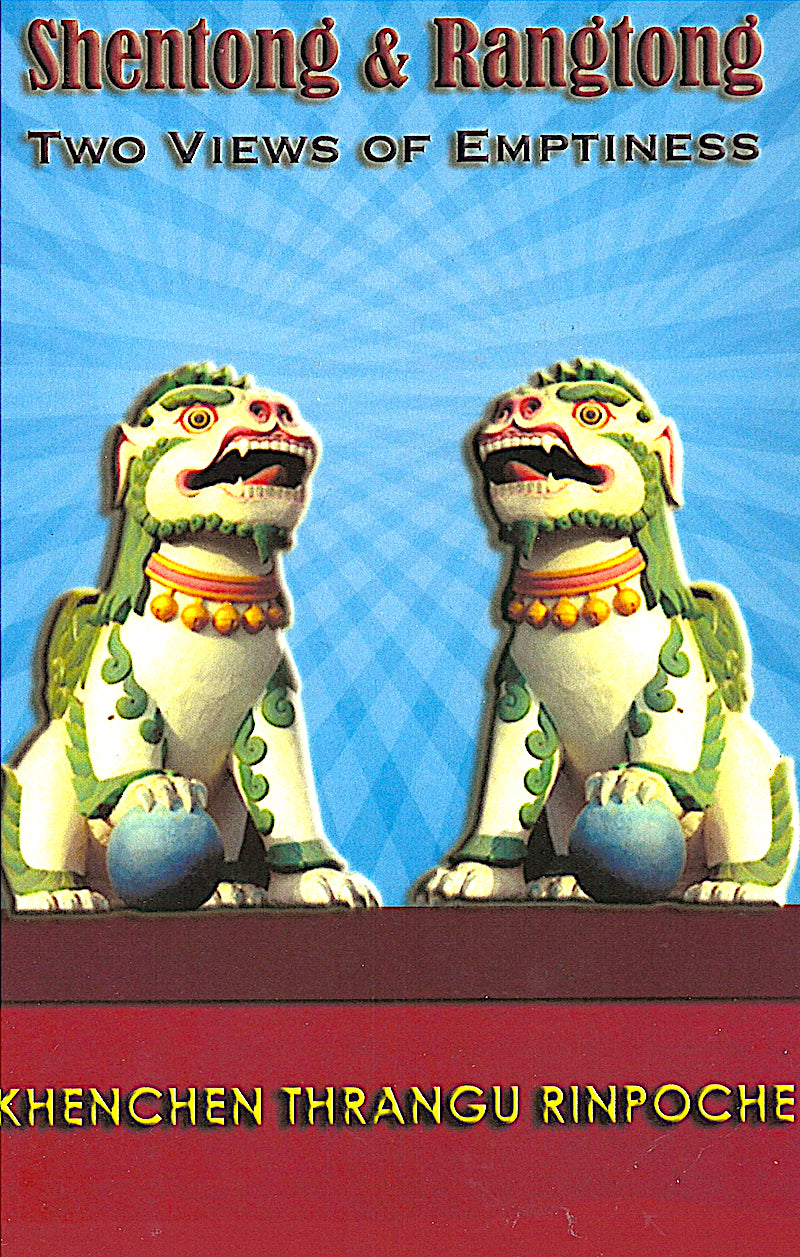My Store
Shentong and Rangtong (Book)
Shentong and Rangtong (Book)
Couldn't load pickup availability
The Mahayana path of Buddhism requires the development of vast loving-kindness and compassion. The foundation for developing impartial compassion for all sentient beings is based on understanding the emptiness of self and the emptiness of phenomena.
In the book Thrangu Rinpoche begins with a lucid description of the four major schools of Buddhism and their tenants. Each school had its own view of reality and Rinpoche describes the similarities and differences of these views. The Middle Way path had two important schools in Tibet: the Shentong and the Rangtong.
First we must understand the word “emptiness” (Skt. shunyata, Tib. tong-pa-nye) which has a special meaning in Buddhism. We naturally say our cup is “empty” and we mean there is no tea in it. But when we say a tree is “empty” we mean do not mean it is not there, but we mean that the thing in front of us is made up millions of different parts (cells, branches, leaves, roots and so on) and none of these are the actual tree. Rather the tree is “empty” because our mind takes the huge configuration and mentally “sees” it as a single tree.
In the discussion of the Rangtong, Rinpoche shows how important it is to understand the emptiness of persons and the emptiness of phenomena because this understanding helps develop an accurate view of the world (dharmata) and thus shows us how to proceed in our practice.
In the discussion of Shentong, Rinpoche describes the empty, luminous clarity of mind and how this is developed in meditation. This clarity is also closely related to understanding Buddha-nature and Vajrayana practice of meditation. Thrangu Rinpoche explains all this very carefully and bases this discussion on Jamgon Kongtrul's encyclopedic text The Treasury of Knowledge.
This book was rated a 4.7 out of 5.00 points by 5 of its Amazon readers.


